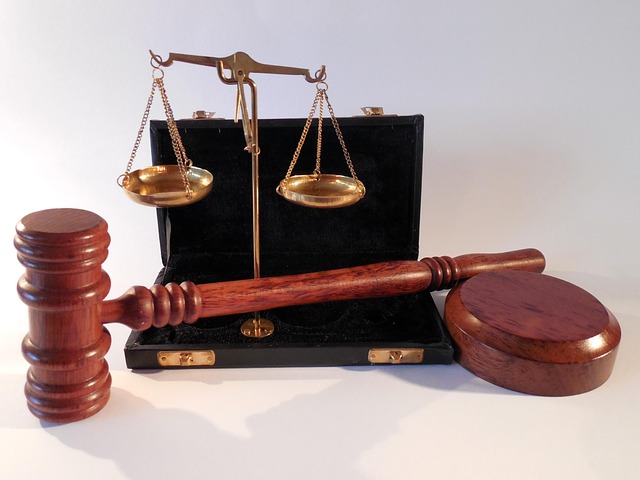Securities fraud, a global issue involving misrepresenting financial info and price manipulation, presents significant challenges for regulators. Loopholes, evolving tactics, and complex multinational cases strain enforcement efforts. The globalization of markets and digital trading platforms have exacerbated these Regulatory Challenges in Securities Fraud Cases, making traditional oversight ineffective. Despite notable scandals like Enron and WorldCom, fraud continues due to dynamic market conditions and evolving techniques. Overcoming these challenges requires technology, education, collaboration, and constant adaptation to stay ahead of fraudulent activities.
Fraudulent financial practices, particularly securities fraud, pose significant challenges to investors and regulatory bodies alike. This article delves into the intricate world of stock manipulation, exploring common schemes like insider trading and pump-and-dump tactics. We analyze the regulatory landscape, highlighting the complexities arising from international jurisdictions versus national control, especially in light of evolving financial instruments and digital trading platforms. By examining notable fraud scandals, we uncover the impact on global markets and discuss strategies to enhance detection and prevention through technology, education, and collaborative efforts.
- Understanding Securities Fraud: Definition and Common Schemes
- Regulatory Framework: International vs National Jurisdiction in Fight Against Fraud
- Challenges Posed by Complex Financial Instruments and Digital Trading
- Case Studies: Notable Securities Fraud Scandals and Their Impact
- Enhancing Detection and Prevention: Role of Technology, Education, and Collaboration
Understanding Securities Fraud: Definition and Common Schemes

Securities fraud refers to a range of illegal activities designed to deceive investors by making false or misleading statements about securities—such as stocks, bonds, and other investment instruments. These fraudulent practices pose significant challenges for regulatory bodies tasked with protecting investors and maintaining fair markets. Common schemes include misrepresenting financial information, manipulating stock prices, and using Ponzi-like structures to attract new investments based on previous clients’ gains.
Regulatory agencies face complex tasks in prosecuting securities fraud cases due to the intricate nature of these crimes. They must navigate legal loopholes and constantly adapt their strategies to address evolving fraudulent tactics employed by perpetrators targeting both corporate and individual clients. While successful prosecutions can result in complete dismissal of all charges, securing justice remains a challenging regulatory goal in the dynamic landscape of financial markets.
Regulatory Framework: International vs National Jurisdiction in Fight Against Fraud

The global fight against fraudulent financial practices, particularly securities fraud, highlights a key dichotomy between international and national regulatory frameworks. While international regulations strive to create a unified front against financial crimes across borders, national jurisdictions often face distinct challenges in enforcing laws and recovering losses. This disparity is especially pronounced in high-stakes cases with complex, multinational dimensions, where an unprecedented track record of successful prosecutions remains elusive.
Regulatory challenges stem from differences in legal systems, enforcement capabilities, and political will among countries. National regulators often grapple with limited resources and jurisdiction over foreign entities, hindering their ability to effectively combat fraud that transcends national boundaries. As a result, global financial crimes often go unpunished or are only partially addressed, fueling concerns about fairness and market integrity.
Challenges Posed by Complex Financial Instruments and Digital Trading

The rise of complex financial instruments and digital trading platforms has significantly complicated the landscape of securities fraud cases, presenting substantial regulatory challenges. As markets become increasingly globalized and interconnected, traditional methods of oversight and enforcement struggle to keep pace with innovative schemes designed to exploit loopholes in regulations. These intricate instruments, often traded electronically, can obscure the trail of transactions, making it difficult for investigators to trace and attribute blame. The digital nature of trading further exacerbates this issue, as it allows for rapid, anonymous, and international movements of funds, hindering traditional law enforcement approaches.
White-collar defense attorneys face a daunting task when representing individuals or entities accused of fraudulent financial practices in this dynamic environment. Achieving extraordinary results often involves navigating complex legal and regulatory frameworks to uncover the truth behind these sophisticated schemes. Skilled practitioners must possess an in-depth understanding of financial markets, trading strategies, and emerging technologies to develop effective defenses that protect their clients’ rights while upholding the integrity of financial systems.
Case Studies: Notable Securities Fraud Scandals and Their Impact

Notable securities fraud scandals have left indelible marks on both financial markets and public trust. Case studies like Enron’s collapse in 2001 and WorldCom’s fraudulent accounting practices in 2002 highlight the profound impact of such malfeasance. These events not only exposed intricate schemes involving manipulation of financial statements but also underscored the complex regulatory challenges in securities fraud cases. The white collar defense strategies employed by accused companies often navigate intricate legal landscapes, aiming for achieving extraordinary results while safeguarding respective business interests.
Such scandals have prompted regulatory bodies to tighten oversight and introduce stringent compliance measures. The heightened scrutiny has forced businesses to implement robust internal controls and transparency mechanisms. Despite these efforts, the dynamic nature of financial markets and evolving fraud techniques continue to pose significant regulatory challenges in securities fraud cases, necessitating a perpetual state of vigilance and adaptation in both regulatory enforcement and business ethics.
Enhancing Detection and Prevention: Role of Technology, Education, and Collaboration

In the ongoing battle against fraudulent financial practices, enhancing detection and prevention mechanisms is paramount. Technology plays a pivotal role in this regard, with advanced data analytics and machine learning algorithms capable of uncovering complex patterns indicative of securities fraud. By analyzing vast datasets, these tools can identify anomalies and red flags that may have been previously overlooked by manual methods, thereby improving the accuracy and speed of fraud detection.
Moreover, education and collaboration are crucial components in strengthening defenses against fraudulent activities. Financial institutions must invest in training their employees to recognize potential risks and suspicious activities, while fostering a culture that encourages open communication and reporting mechanisms. Collaboration between regulatory bodies, law enforcement agencies, and financial institutions is also essential in addressing the complex nature of securities fraud, especially given the ever-evolving methods employed by criminals. Effective coordination allows for the sharing of intelligence, resources, and best practices, ultimately enhancing the ability to investigate and prosecute fraudulent cases, including those involving corporate and individual clients, while navigating the Regulatory Challenges in Securities Fraud Cases.
Securities fraud remains a global challenge, with evolving practices demanding dynamic responses from regulatory bodies. Navigating the intricate web of international jurisdiction and complex financial instruments poses significant regulatory challenges in securities fraud cases. As technology advances, so too do fraudulent schemes, underscoring the need for enhanced detection methods and increased educational awareness. Collaborative efforts between regulators, industry professionals, and technological innovators are crucial to stay ahead of these deceptive practices, ensuring a more transparent and secure financial landscape for all.






